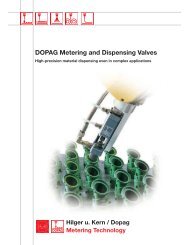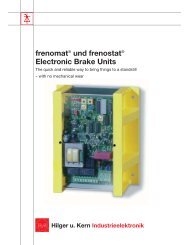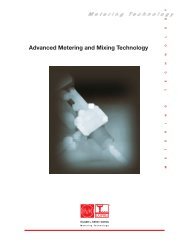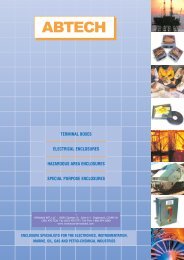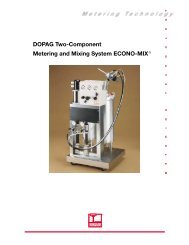GEARS
6*'4/12.#56+% GEARS - NovaMax Industrial Intl
6*'4/12.#56+% GEARS - NovaMax Industrial Intl
- No tags were found...
Create successful ePaper yourself
Turn your PDF publications into a flip-book with our unique Google optimized e-Paper software.
C<br />
B<br />
C<br />
C<br />
D<br />
C<br />
Excessive wearing of the sides (wearing of the<br />
outer plastic coating)<br />
Wrong alignment or non-rigid rotation axes.<br />
Wrong welding of the flange<br />
Check the alignment or the welding, or fix the<br />
shafts<br />
Wearing of the outer plastic coating covering<br />
the working side of the belt tooth<br />
Overloading and/or excessive belt tightening,<br />
wrong moulding of the pulley<br />
Increase the loading capacity of the belt and/or<br />
reduce belt tension. Change the pulley<br />
Cracking of the coating in chloroprene<br />
Exposure to extemely low temperatures (below<br />
-30°)<br />
Try to increase the temperature or ask our<br />
Technical Dept. for special belts<br />
Softening of the coating in chloroprene<br />
Exposure to extremely high temperatures<br />
(over 90°)<br />
Try to reduce the temperature or ask our<br />
Technical Dept. for special belt<br />
Apparent softening of the belt tension<br />
Reduction of the centre distance and/or nonrigid<br />
assembling<br />
Stretch the belt again and/or stiffen the position<br />
of the axes<br />
Braking of tension elements<br />
Overloading and/or excessive belt tension, the<br />
diameter of the pulley might be too small<br />
Increase to loading capacity of the belt and/or<br />
reduce belt tension. Increase the diameter of the<br />
pulley or use a pulley with a smaller diameter<br />
Irregular wearing of some belt teeth<br />
Jump of a tooth. Excessively dirty environment<br />
Increase belt tension<br />
Excessive wearing of the pulley<br />
Overloading and/or excessive belt tension. Low<br />
hardness of the material<br />
Increase the loading capacity of the belt and/or<br />
reduce belt tension. Harden the surface of the<br />
pulley and/or use a stronger material<br />
Loss of the flanges, wearing of the flanges<br />
Wrong asembling of the flanges. Wrong alignment<br />
Re-assemble the franges. Correct the alignment<br />
Excessive noise during chain drive<br />
Wrong alignment. Overloading and/or excessive<br />
belt tension. The diameter of the pulley might be<br />
too small. Extremely precise tooth profile<br />
Correct the alignment. Increase the loading capacity<br />
of the belt and/or reduce belt tension. Increase the<br />
diameter of the pulley<br />
Vibration of the slacked branch<br />
Extremely low belt tension<br />
Increase belt tension<br />
Vibration of the stretched branch<br />
Extremely high belt tension<br />
Reduce belt tension



